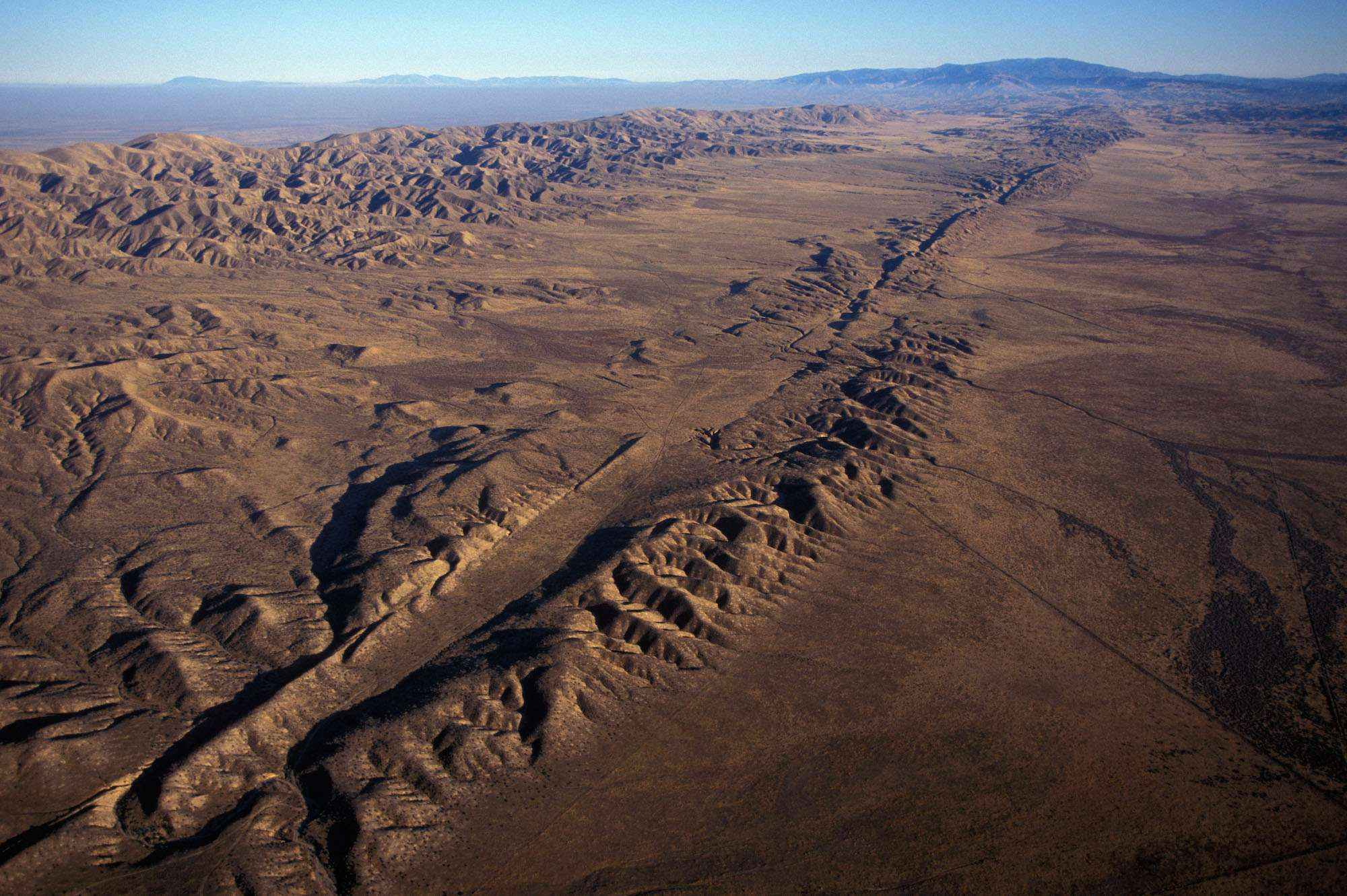
The world is filled with breathtaking natural wonders, and one of them is the awe-inspiring geological feature known as an escarpment. Spanning across different continents, escarpments are steep slopes or cliffs that separate two contrasting landscapes. These geological formations have captivated explorers, scientists, and nature enthusiasts for centuries. Whether it’s the towering cliffs along the Great Rift Valley in Africa or the majestic Niagara Escarpment in North America, escarpments offer a glimpse into the geological history of our planet.
In this article, we will delve into the fascinating world of escarpments and uncover 13 mind-blowing facts about these geological wonders. From their formation to their ecological significance, there is so much to learn about these natural marvels. So, get ready to be amazed as we embark on a journey to explore the incredible beauty and geological significance of escarpments around the world.
Key Takeaways:
- Escarpments are like natural boundaries that separate different regions and create stunning landscapes, influencing local climate and supporting unique ecosystems.
- They are geological time capsules, offering a glimpse into Earth’s history and providing thrilling opportunities for rock climbing and waterfall formation.
The Grand Canyon is an Iconic Escarpment
One of the most famous escarpments in the world is the Grand Canyon. Carved by the Colorado River, this massive gorge stretches over 277 miles and exposes nearly two billion years of Earth’s geological history.
Escarpments Provide Stunning Views
Whether it’s the breathtaking cliffs of the White Cliffs of Dover in England or the dramatic scenery of Table Mountain in South Africa, escarpments offer spectacular vistas that attract millions of visitors each year.
They Serve as Natural Boundaries
Escarpments often act as natural boundaries between different regions, separating highlands from lowlands or marking the transition from one geological formation to another.
Escarpments Can Be Found Underwater
Not all escarpments are visible above water. Submarine escarpments, such as the Great Barrier Reef slope in Australia, can be found beneath the sea and support diverse and unique ecosystems.
They Influence Local Climate
Escarpments can have a significant impact on local climates. As air rises over the steep slopes of an escarpment, it cools and can cause the formation of precipitation, resulting in variations in rainfall patterns.
Ancient Rock Art Can Be Found on Escarpments
Escarpments have historical and cultural significance. Many ancient civilizations left their mark on these cliff faces, creating rock art that provides valuable insights into their way of life.
Escarpments Are Home to Unique Plant and Animal Species
The diverse habitats created by the varying topography of escarpments support a wide range of plant and animal species. From desert-dwelling cacti to endangered bird species, these ecosystems are rich in biodiversity.
They Are Geological Time Capsules
Escarpments offer a glimpse into the Earth’s geological past. The layers of rock exposed on the steep slopes allow scientists to study the history of the planet and uncover clues about its formation.
Some Escarpments Are Popular Rock Climbing Destinations
For adventure seekers, certain escarpments provide thrilling rock climbing opportunities. From the famous El Capitan in Yosemite National Park to the towering cliffs of Mount Roraima in South America, these vertical landscapes attract climbers from around the world.
Escarpments Can Create Natural Waterfalls
When rivers or streams flow over the edge of an escarpment, it can result in the formation of stunning waterfalls. Examples include Angel Falls in Venezuela, the highest waterfall in the world, and the majestic Iguazu Falls on the border of Argentina and Brazil.
They Shape the Landscape
Escarpments play a significant role in shaping the overall landscape. They contribute to the formation of valleys, canyons, and plateaus, adding depth and character to the surrounding environment.
Escarpments Provide Insights into Earth’s Tectonic Activity
Studying the formation and structure of escarpments helps scientists understand the tectonic forces at work beneath the Earth’s surface. By examining the slopes and fault lines, geologists can gain valuable insights into the planet’s dynamic geological processes.
Escarpments Are Tourist Attractions
Many escarpments have become popular tourist destinations, offering visitors the chance to hike, explore, and marvel at the natural beauty. From the Cliffs of Moher in Ireland to the Niagara Escarpment in North America, these geological wonders attract travelers from far and wide.
There you have it, the 13 mind-blowing facts about escarpments that demonstrate the captivating nature of these geological features. From their influence on climate and rich biodiversity to their historical and cultural significance, escarpments continue to captivate explorers, scientists, and nature enthusiasts alike. So, the next time you encounter an escarpment, take a moment to appreciate the wonders of our planet’s diverse landscapes.
Conclusion
The escarpment is a fascinating geographical feature that is both captivating and awe-inspiring. Its unique formation and numerous breathtaking locations make it a must-visit for geography enthusiasts and nature lovers alike. From the stunning Niagara Escarpment to the dramatic Great Escarpment in Africa, there is no shortage of wonders to explore.Throughout this article, we have uncovered thirteen mind-blowing facts about escarpments. From their role in shaping landscapes to their importance in ecosystems, escarpments are more than just beautiful cliffs. They are geological marvels that have shaped the Earth’s surface in extraordinary ways.Whether you are planning a trip to an escarpment or simply want to learn more about these incredible formations, we hope this article has provided you with valuable insights and piqued your curiosity. So, lace up your hiking boots, grab your camera, and get ready to experience the awe-inspiring beauty of escarpments firsthand.
FAQs
1. What is an escarpment?
An escarpment is a steep slope or cliff that separates two different landforms. It is typically formed by faulting, erosion, or tectonic activity.
2. How are escarpments formed?
Escarpments are formed through a combination of geological processes, including uplift, erosion, and faulting. Over time, these processes create steep cliffs or slopes that can be seen in various landscapes.
3. Can escarpments be found all over the world?
Yes, escarpments can be found in many different parts of the world. Some famous escarpments include the Niagara Escarpment in North America, the Great Escarpment in Africa, and the Nullarbor Escarpment in Australia.
4. Are escarpments dangerous?
While escarpments can be visually stunning, they can also be dangerous if not approached with caution. It is essential to follow safety guidelines, stick to designated trails, and be aware of potential hazards such as loose rocks and unstable terrain.
5. Can you hike along escarpments?
Yes, many escarpments offer hiking trails that allow visitors to explore their beauty up close. Some trails may require permits or have certain restrictions, so it’s always a good idea to check with local authorities or park officials before embarking on a hike.
6. Do escarpments have any ecological significance?
Yes, escarpments often serve as important ecological corridors, providing habitat for a diverse range of plant and animal species. They can act as natural boundaries and create unique microclimates, supporting various ecosystems.
7. Are there any famous landmarks associated with escarpments?
Yes, many famous landmarks are located along or near escarpments. For example, the world-renowned Victoria Falls in Africa is formed by the Zambezi River cascading over the edge of the Zambezi Escarpment.
8. Can escarpments affect weather patterns?
Yes, escarpments can influence weather patterns in the areas surrounding them. The steep slopes can cause air to rise or descend, leading to the formation of localized weather phenomena or influencing wind patterns.
9. Are there any human settlements located on escarpments?
Yes, human settlements can be found along some escarpments. The natural vantage points and resources provided by escarpments have often made them attractive locations for communities throughout history.
10. Can you find fossils in escarpments?
Yes, escarpments can sometimes contain fossils due to their formation through millions of years of geological processes. Fossils found in escarpments provide valuable insights into past ecosystems and the history of life on Earth.
Escarpments captivate with their stunning beauty and geological significance. After learning these mind-blowing facts, you might be curious to explore more natural wonders. Uncover the secrets of Lake Eyasi, a hidden gem nestled in the African wilderness. Marvel at the towering presence of Warren Hill, a landmark steeped in history and mystery. Nature's treasures await your discovery, each with its own unique story to tell.
Was this page helpful?
Our commitment to delivering trustworthy and engaging content is at the heart of what we do. Each fact on our site is contributed by real users like you, bringing a wealth of diverse insights and information. To ensure the highest standards of accuracy and reliability, our dedicated editors meticulously review each submission. This process guarantees that the facts we share are not only fascinating but also credible. Trust in our commitment to quality and authenticity as you explore and learn with us.


